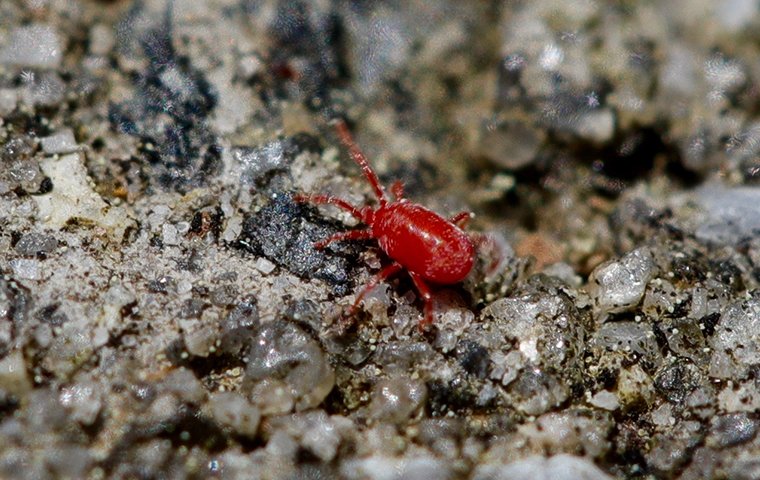Occasional Invader
Occasional invaders are types of insects that occasionally, or intermittently, enter homes and other structures throughout the year. These insects usually gather together and enter homes in large numbers when the weather becomes too cold, hot, wet, or dry for them to live comfortably outdoors. As their name suggests, occasional invaders are a species of insect that occasionally enter homes and other structures throughout the year. They usually enter homes in large groups when the weather outside becomes unsuitable for them to live successfully. Occasional invaders live outside near homes and other structures, allowing them to easily move inside through cracks, crevices, and other openings to take advantage of our temperature-controlled buildings. Many occasional invaders move indoors in the late fall seeking warm shelter in which to overwinter. When the weather warms back up in the. Occasional invader control begins outside by caulking cracks around windows, doors, siding, and screening around utility pipe entry points. Repair or replace damaged window and door screens, as well as damaged weather stripping and loose bricks/mortar. What are occasional invaders? The term occasional invaders is a catchall grouping for pests that invade homes from time to time because outside weather conditions become hostile to their survival. What types of pests fall into this group?
Brown Marmorated Stink Bug
Asian Lady Beetle
Boxelder Bug

Prevention is the Key to Success
- Strategic placement of light traps (facing the interior of the building) in shipping areas and near loading docks.
- Install screens on windows, and roof and utility vents –make sure the screens do not have tears or openings.
- Install screens with tightly woven mesh to prevent small pests from slipping through and gaining access.
- Adjust exterior lighting in parking lots to attract occasional pests away from structures.
- Ensure there is positive air flow in your facility with air blowing out.
- Maintain the landscape on the exterior of your facility by mowing the grass regularly, trimming shrubs and trees, and eliminating excess vegetation that serve as a food and or harborage source for occasional invaders.
Categories:
What are occasional invaders?
Occasional invaders are those pests that live outside most of the time but, at some points throughout the year, decide to invade your home or business and take advantage of its temperature-controlled environment and access to food sources. Occasional pests can also be accidentally and unknowingly introduced onto your property by people or pets.
Some of the most common species of occasional invaders found living throughout our area of Greater Baltimore include the following:
Beetles (Coleoptera)
Beetles come in a variety of shapes and sizes. They have well-developed antennae and chewing mouthparts, as well as shell-like front wings that cover their back wings. Most species also have a well-defined line running down their backs where their front wings meet. Beetles, depending on their species, feed on a variety of things including fabrics, plants, other insects, stored grains, and wood.
Centipedes (Chilopoda)
Centipedes are a predatory species that feed on insects and spiders. They have long, flat, segmented bodies that range in color from yellowish-gray to darkish-brown. Centipedes have one pair of legs per body segment; the first pair of their limbs (maxillipeds) ends in sharp claws and contains venom glands used to capture and paralyze prey.
Fleas (Siphonaptera)
Fleas feed solely on the blood of mammals. Adult fleas are very small in size, growing to about 1/12 to 1/6 of an inch. They have hard, flattened bodies that are dark brown in color and very difficult to squish. Fleas have six legs; they are wingless and incapable of flight, but their long, powerful hind legs allow them to jump great distances.
Millipedes (Diplopoda)
Millipedes look very similar to worms but can have anywhere from 30 to 90 pairs of legs. They are dark brown in color and approximately 3/4 to 1 inch long. When threatened, millipedes will curl up into tight balls. These occasional invaders are scavengers that have high moisture needs and cannot survive in dry environments.
Mosquitoes (Culicidae)
Adult mosquitoes have narrow, oval-shaped bodies with long legs, a single pair of wings, and long, piercing mouthparts called proboscises that they use for sucking up liquids. Their bodies are black or gray and covered with iridescent scales that can be blue, green, silver, or white in color. Both male and female mosquitoes feed on the nectar of flowers as their main food source; only females feed on the blood of humans and animals, as they require the protein in blood to produce their eggs.
Silverfish (Lepisma saccharina)
Silverfish have brown, teardrop-shaped bodies that are covered in gray scales. They are wingless and can grow to about 3/4 of an inch in length. They also have three distinct, bristle-like appendages protruding from the back of their bodies. Silverfish move from place to place in a wriggling, fish-like manner.
Stink bugs (Halyomorpha halys)
Stink bugs are agricultural pests that typically invade homes in large numbers during the fall. Stink bugs are as wide as they are long; they have mottled, brown or tan bodies with copper or metallic blue-colored patches on their heads. As their name suggests, these insects release a very foul-smelling liquid when threatened or squished.
Ticks (Ixodida)
Like fleas, ticks are external parasitic pests that feed solely on blood. Ticks are a type of arachnid and adults have eight legs. These pests have wingless, oval-shaped bodies that swell and grow in size after consuming a blood meal, though their exact size and color pattern is species dependent.
Are occasional invaders dangerous?

Depending on their species, most occasional invaders are considered nuisance pests. Some, however, do have the potential to be dangerous. Parasitic pests such as fleas, ticks, and mosquitoes have the potential to transmit diseases to people and our pets, while beetles have the potential to contaminate food and cause damage to personal items. Occasional invaders like centipedes, millipedes, and stink bugs all can invade your home or commercial property in large numbers and become a huge annoyance to deal with.
Why do I have an occasional invader problem?
Most occasional invaders will make their way indoors when the weather outside becomes unsuitable for them to live comfortably. These occasional invaders can also be accidentally introduced into your home or business on objects that are brought in from outside such as boxes, furniture, newspapers, packages, and potted plants.
Fleas and ticks can be introduced into your home or business on people or pets that have come into contact with them while spending time outdoors. Mosquitoes often will find their way inside accidentally while foraging for food and can become a huge problem on any property with standing water on which they can lay their eggs.


Where will I find occasional invaders?
Occasional invaders can often be found living outside in dark, damp places like under mulch, under overgrown shrubs or bushes, under landscaping ties or rocks, in tall grasses, and landscaped areas. Depending on the species, however, these occasional invaders can live in a variety of locations. Parasitic pests such as fleas and ticks are more often than not found on the backs of their hosts. When living inside, occasional invaders take up residence in dark, humid, hard-to-reach areas of a home or business such as in basements, bathrooms, crawlspaces, laundry rooms, and behind wall voids.
How do I get rid of occasional invaders?
To get rid of occasional invaders, we recommend contacting a pest control company with the experience, knowledge, and tools required to completely eliminate the infestation. Phenom Pest Protection is a local, family-owned business committed to offering phenomenal service and results. We customize our treatment process to ensure your property's specific needs are met. To learn more about our effective pest control services offered to properties throughout Greater Baltimore, contact Phenom Pest Protection today!
How can I prevent occasional invaders in the future?
In addition to our home pest control and commercial pest control services, protect your property from pests with the following prevention tips:
Exterior tips
Occasional Invaders Pest
Seal any cracks or gaps in the foundation, exterior walls, or the roofline of your property.
Cut back overgrown vegetation away from the exterior of your home or business.
Place weather stripping around exterior doors and windows.
Place door sweeps on exterior doors.
Fix low-lying areas on your property that can collect water.
Store containers that can collect water upside-down when not in use.
Leave a barrier of rock or crushed stone between any grass or mulch and the foundation of your property.
Interior tips
Occasional Invaders

Store clothes and other fabrics in plastic containers with locking lids rather than in cardboard boxes.
Inside, keep storage areas free form clutter.
Use dehumidifiers to reduce moisture levels in your home or business.
Under the guidance of their veterinarian, place pets on a year-round flea and tick preventative program.
Got my first service done today and was happy to see that not only did I get a great deal, but they did everything they told me they were going to do, and they were right on time!! Heather did my service and she did a great job! Highly recommend this company if you like working with organized and reliable people who have a vision for growing a company through customer service! “PHENOMenal!!”